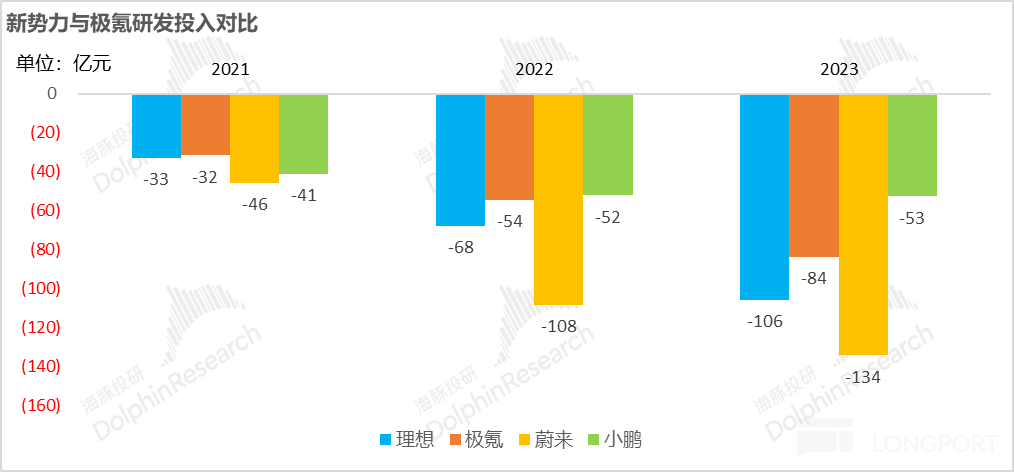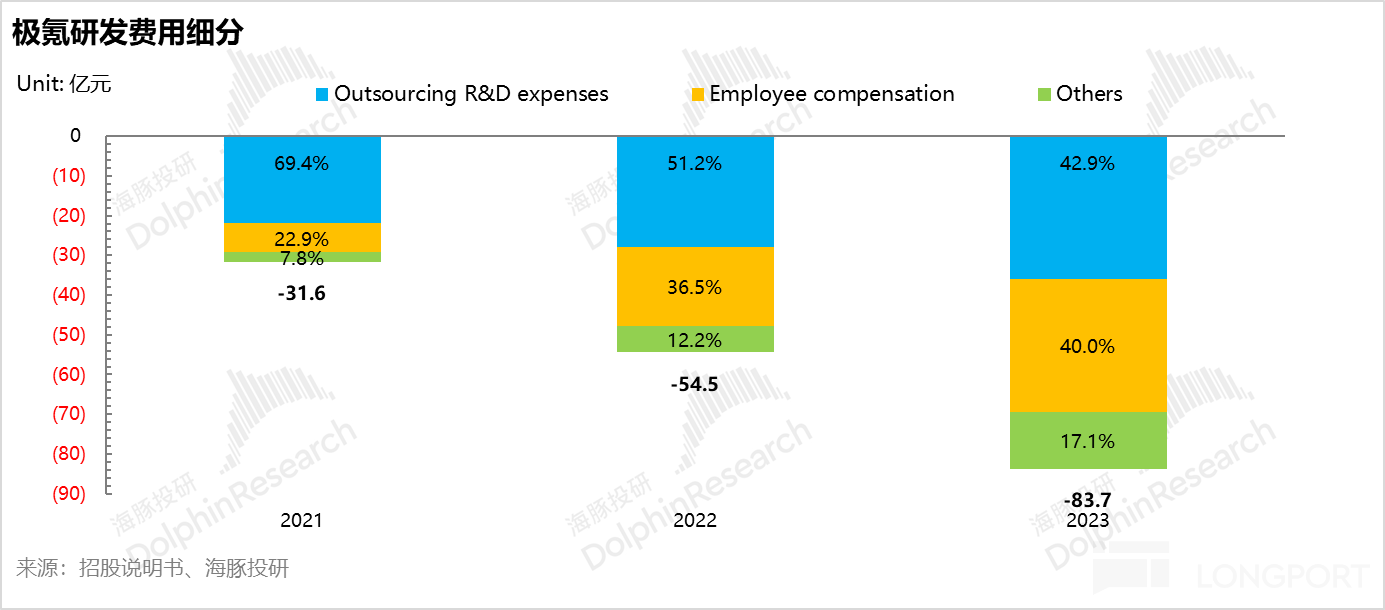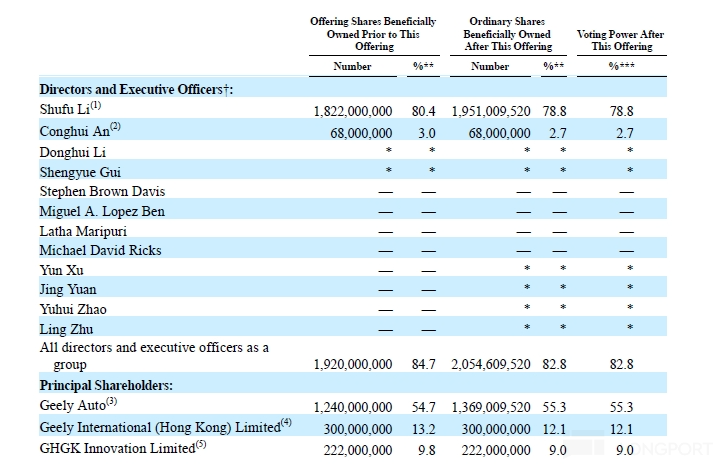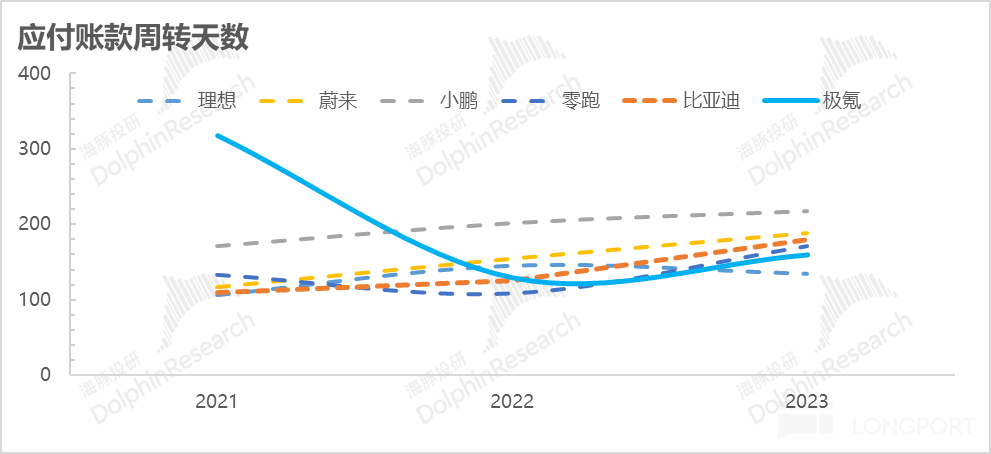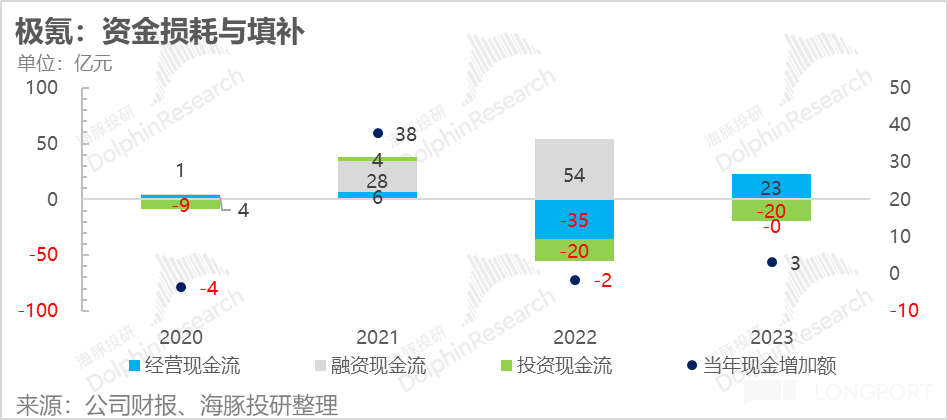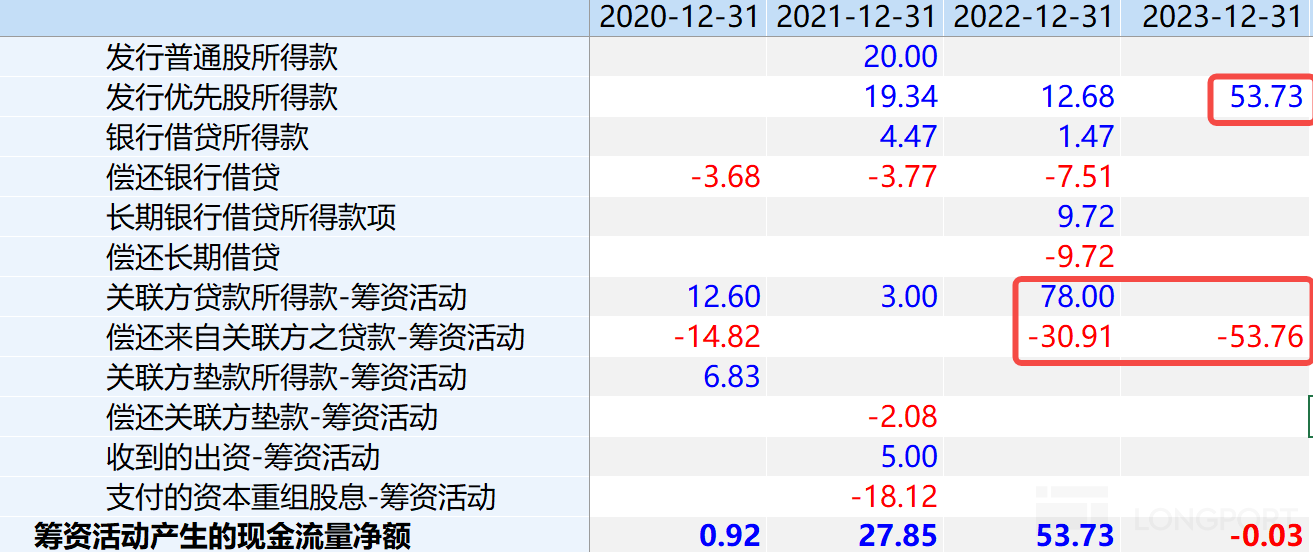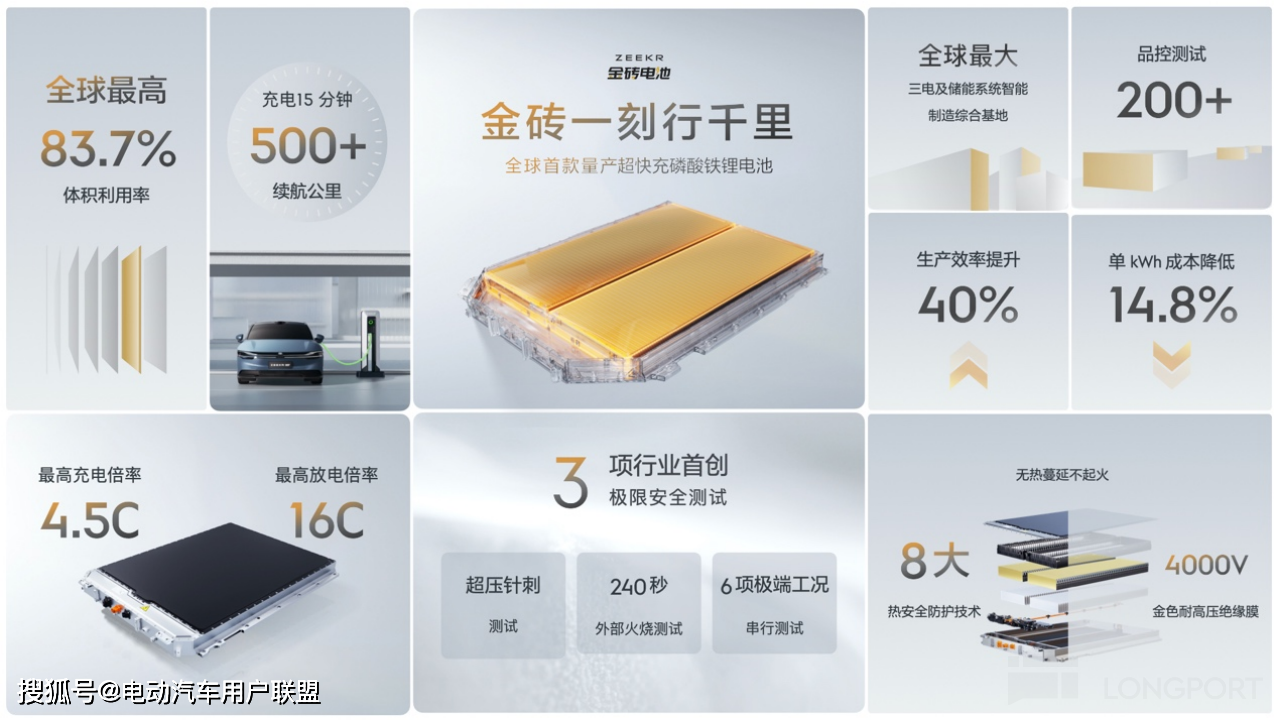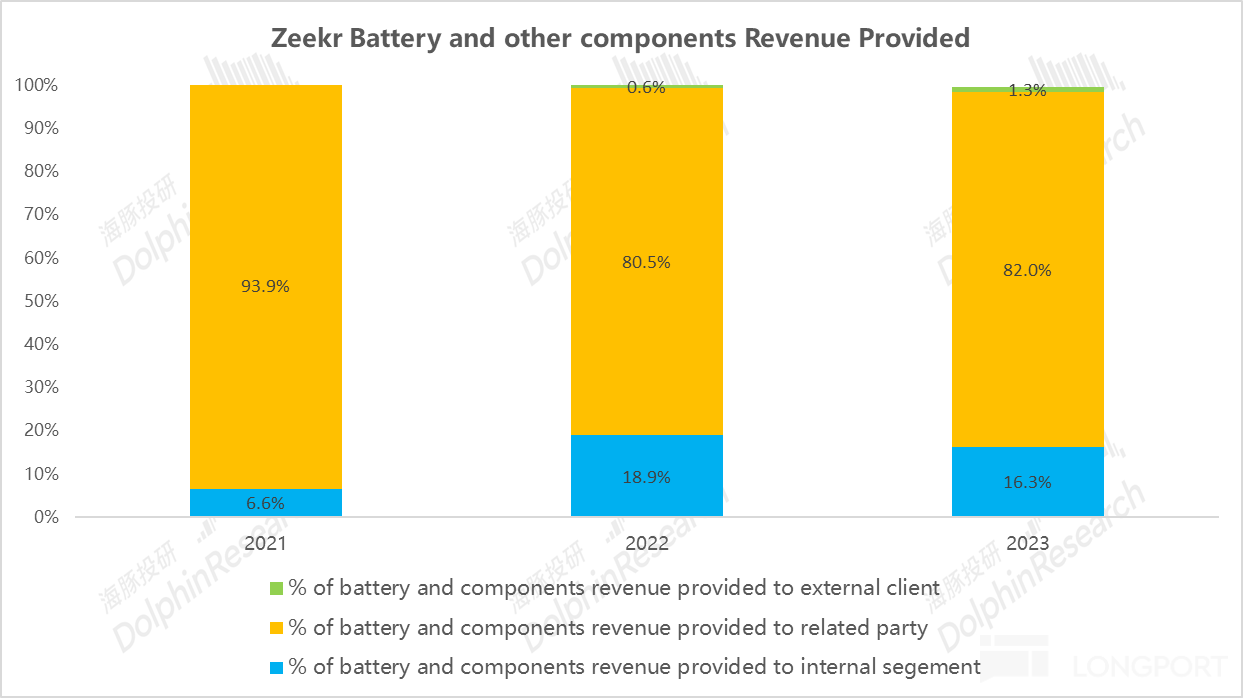
 Likes Received
Likes Received Posts
PostsZEEKR: Is being too indulgent a good thing or a bad thing from a father?

On May 10th, Geely's pure electric new energy vehicle company ZEEKR Holdings officially landed on the NYSE, becoming another Chinese pure electric asset to be listed overseas following Nio, Li Auto, and Leapmotor.
However, unlike the previous four companies that faced numerous challenges on their path to survival, ZEEKR, as a typical second-generation pure electric vehicle born with a "golden key":
a. Unlike others who took years from fundraising to the launch of their first vehicle, ZEEKR went public in April 2021 and released its first mass-produced vehicle, ZEEKR 001.
b. In less than 3 months of establishment, Geely, the parent company, handed over its core assets - research and development + powertrain - to its subsidiary ZEEKR at a "family price".
As a result, unlike the other four pure electric vehicle companies, ZEEKR not only relies on normal vehicle sales revenue like Nio, Li Auto, and Leapmotor but also has additional income from power batteries and research and development.
However, even so, ZEEKR still seems to be struggling after its IPO:
The listing process was turbulent, with suspensions and restarts.
The final valuation at the IPO was significantly lower than expected, and the market financing was far from satisfactory.

The fundraising at the IPO was less than $450 million, with Geely subscribing nearly $270 million, contributing almost 70% of the total financing amount.

Although the stock rose by 35% on the first day of trading, it has since dropped back to the IPO price.
With a PS ratio of less than 0.7X, its valuation remains significantly lower than its peers. This raises questions:
a. With such a low valuation, is the relationship between Geely and ZEEKR "toxic"? b. Are the powertrain and research and development businesses assets of high value or hidden liabilities, and how should their valuation be viewed? c. Returning to the core: How capable and promising is ZEEKR in the business of selling cars? d. Is undervalued ZEEKR really being unjustly treated?
This article will focus on addressing the first two questions, clarifying the relationship with related parties and evaluating the value of the two assets injected. After addressing these initial questions, we will delve deeper into understanding ZEEKR's business layout, core competitiveness, and what its true value should be.
The following is the main content:
I. Geely and ZEEKR: A Pampered Parent?
From the original Leading ZEEKR Pure Electric Business Unit to its establishment in 2021 and IPO in 2024, Geely has treated this subsidiary as a "treasured gem": providing funding, technology, resources, and production capacity to help this subsidiary grow and strengthen. Specifically:
a. Providing Technology: Authorized use of the SEA Haohan Architecture
We know that the core elements of car manufacturing - funding + powertrain system + vehicle platform/technology - almost constitute the soul of car manufacturing. The core elements of ZEEKR are closely linked to Geely Holding and its listed entity Geely Auto, forming an inseparable bond SEA Haohan Architecture, which started development within Geely in 2016, was officially launched in 2020 after 4 years of development and over 20 billion RMB in investment. It is Geely Group's pure electric vehicle platform that covers A-E class vehicles, a brand-new three-electric system, high-performance pure electric chassis, and an open-source operating system (OS).
Due to its wheelbase ranging from 1800mm to 3300mm, compatible with A to E class vehicles, this architecture has been shared by over 7 brands and 16 models under Geely, indicating a high level of component sharing for ZEEKR models. This allows for joint procurement on the purchasing side, leading to economies of scale and presenting a decent gross profit margin in the automotive business.
The Haohan Architecture is also the core of ZEEKR vehicles, with its chassis and electric drive system developed based on SEA Haohan Architecture. This ensures that ZEEKR models excel in the quality of their three-electric system and chassis, holding a leading edge in safety and performance. The ZEEKR 001 is the first mass-produced model based on the SEA architecture platform and a star product under this platform.

The key issue here is how ZEEKR and Geely settle their accounts regarding the use of this platform. According to the information from the prospectus:
a. Since SEA Haohan Architecture was developed by Geely, the initial investment of over 20 billion RMB is recorded on Geely's books, and the ownership belongs to Geely.
b. ZEEKR uses the SEA framework and needs to pay Geely an annual licensing fee, priced based on the sales volume of vehicles developed on the SEA platform and the average selling price. ZEEKR accounts for this as R&D expenses.
c. After obtaining the authorization, ZEEKR can not only use it for themselves but also license it to other Geely brands, earning additional licensing fees.
The question is whether this economic arrangement is cost-effective. Dolphin carefully examined ZEEKR's allocation of R&D resources:
In terms of R&D personnel allocation, ZEEKR clearly exceeds the norm—excluding Nio, which spends lavishly on R&D without hesitation, ZEEKR's R&D personnel are significantly more than XPeng and Li Auto.
Assuming that the European Research and Development Center (CEVT) and Ningbo Weirui lead to an additional increase in R&D personnel, Dolphin directly considers half of CEVT's 700+ employees and half of Weirui's 2000 employees with their own factory as R&D personnel, deducting them from ZEEKR's total R&D personnel. With over 5700 personnel, given the outsourcing of pure electric platforms and the relatively weak research and development in automotive intelligence, the excessive number of R&D personnel at ZEEKR may indicate low output efficiency, with R&D expenses potentially still in the preliminary investment stage.

Continuing to look at the investment in research and development expenses, due to the large number of R&D personnel and the fact that ZEEKR essentially outsources the development of its pure electric platform, the R&D expenses are significantly higher. In 2023, ZEEKR's R&D expenses clearly exceeded XPeng's. Even if we consider the 30+ billion R&D income brought by CEVT assets, along with corresponding R&D costs of over 20 billion, ZEEKR's overall R&D investment in absolute value should be close to that of Li Auto, which has much higher sales volume but weaker output compared to its peers, especially in terms of intelligence.

Looking further into the breakdown of ZEEKR's R&D expenses, out of the 84 billion R&D expenses in 2023, over 40% or 36 billion is paid to external outsourced R&D expenses— including consulting fees, SEA licensing fees, and certification testing fees, among others. Despite having a considerable number of in-house researchers, the outsourced R&D expenses in terms of absolute value and proportion are both significant.

After comparing the R&D data with peers, it is very clear to Dolphin that while ZEEKR shares the SEA platform fees with other Geely-owned companies, the original intention was to save on R&D investment. However, in terms of actual efficiency, although the outsourced R&D expenses did not increase at the same rate as sales growth, the nearly 4 billion outsourced R&D expenses by the end of the year are clearly excessive.
Furthermore, the company plans to further increase R&D investment in the latest quarterly earnings call. In 2024, R&D expenses are expected to increase from over 80 billion in 2023 to 100 billion. Dolphin believes that this increase should not only focus on the total amount but also on improving R&D efficiency.
b. Geely makes cars, ZEEKR sells
Compared to most new energy vehicle companies that are starting to build their own production capacity, ZEEKR still uses Geely's "OEM" production model:
In terms of ZEEKR's production and manufacturing, ZEEKR currently does not have its own factories. The ZEEKR vehicle production factories (Ningbo Factory, Chengdu Factory, Meishan Factory) are all owned by Geely. ZEEKR's manufacturing capacity is shared and used with Geely, with Geely's holding factories producing ZEEKR cars through OEM methods, allowing ZEEKR to operate with low asset intensity.
The main cost of ZEEKR's cars is the purchase cost of ZEEKR models produced by Geely, using a cost-plus pricing model (BOM cost + payment to Geely for manufacturing costs - according to industry practice, 2.5%-3.5% of the single car ASP). ZEEKR does not have fixed costs on the factory side, resulting in lower operating leverage compared to new forces, and the gross profit margin of the car-making business will be more stable.
At the same time, by not needing to build its own factories, ZEEKR has significantly saved on capital expenditures in the early stages of car manufacturing. From 2020 to 2023, over 4 years, ZEEKR's investment in properties, factories, and equipment was only 4 billion yuan. In comparison, Nio, which has almost the same sales volume as ZEEKR, paid approximately 3.2 billion for the acquisition of the Jianghuai factory, allowing ZEEKR to save at least 2-3 billion in early capital investment Similarly, ZEEKR's charging stations are operated by Zhejiang Haohan Energy, with ZEEKR holding only 30% of the shares and Geely Auto Holdings holding 70% of the shares. The ZEEKR brand shares the charging network with other companies within the Geely Group, and ZEEKR also does not need to bear the capital expenditure for charging stations, only sharing the investment returns from Zhejiang Haohan Energy.
Due to ZEEKR not needing to bear the capital expenditure for factories and charging stations, ZEEKR's capital expenditure in 2023 is only 1.9 billion, accounting for only 3.6% of total revenue.
ZEEKR's capital expenditure guidance for 2024 is also maintained at 1.9 billion or slightly higher, significantly lower than the capital expenditure levels of new forces (Li Auto and Nio have capital expenditure guidance for 2024 at over 10 billion), mainly used for investment in Weirui production facilities and the expansion of ZEEKR's sales network.

c. Funding
Since its establishment, apart from two external equity financings, ZEEKR has mostly relied on Geely for funding:
① Equity Subscription: In this IPO, Geely took on most of the ADS issuance for ZEEKR. Geely subscribed to approximately 61% of the ADS issued by ZEEKR in this IPO, bringing about $270 million in financing to ZEEKR. After the IPO, Geely's ownership of ZEEKR shares was not diluted but instead increased to 55.3%.

② Geely Loans: In April 2022, ZEEKR signed a 10-year loan agreement with Geely Auto for a total amount of 9.7 billion RMB, but ZEEKR has already fully repaid this loan. In November 2022, ZEEKR's subsidiary Ningbo Weirui signed another 10-year loan agreement with Geely Auto for a total amount of 1.6 billion RMB, with 1.1 billion RMB still outstanding as of now.
From the wording of these two loan agreements, they seem more like revolving loans. This means that ZEEKR still has approximately 10 billion RMB in credit lines. If ZEEKR runs out of money one day, it can still draw funds from these two agreements at any time. Therefore, with a supportive parent company, ZEEKR may be short of funds, but there is no cash flow risk.
③ Use of Geely's Funds: Another issue related to the support from the parent company is how much ZEEKR is actually short of funds. Looking at the company's loss situation, ZEEKR has incurred a net loss of over 20 billion RMB from 2020 to now, plus an additional 3.5 billion RMB in net capital expenditure for depreciation and amortization. The cash operating loss has reached 23.5 billion RMB, while the actual funds obtained from external equity financing so far are less than 12 billion RMB, indicating a significant fund consumption However, like other new forces, ZEEKR has a very strong operating deposit capability (mainly reflected in the accounts payable to related parties and normal accounts payable). For example, in 2023, the company lost over 8 billion in a year, but the actual operating cash flow was a net inflow of 2.3 billion. This is mainly due to the increase of 8.5 billion in accounts payable to related parties. Since ZEEKR uses Geely's factories to make cars, this single item of payment to related parties for car manufacturing can correct the operating cash flow.
However, from the current accounts payable turnover days (ZEEKR's calculation includes accounts payable + notes payable + accounts payable to related parties), except for the initial stage in 2021, by 2022 and 2023, whether it is the insufficient increase in accounts payable in 2022 or the increased volume in 2023, ZEEKR's time taken for upstream payments seems to be within a reasonable fluctuation range compared to peers.

II. Spoiled: ZEEKR also gives back
When Dolphin saw this, he made a very interesting but crucial discovery for investment judgment: ZEEKR may have a rich father to borrow money as a bottom line, so there won't be a cash flow crisis. However, this does not prevent it from having the internal drive to finance through equity dilution. Why?
Looking at the cash flow situation from 2021 to 2023, in 2021 and 2023, due to the occupation of upstream funds (mainly related to Geely and other related party funds), the heavily losing ZEEKR actually had a net inflow of operating cash flow.
Even now, compared to new forces that have already gone public, ZEEKR is in a precarious financial situation.

Without its own factory, apart from some capital investment in opening stores, ZEEKR has very little capital investment. Therefore, from the perspective of cash needed for pure business operations, the final operating funds for ZEEKR in 2021 and 2023 were basically balanced, and there was no need for additional operational funds on the books.
So, what happened in the cash-strapped year of 2022? Dolphin believes after reviewing the cash flow statement that the main reasons are as follows:
a. Operationally: The amount owed to related parties did not increase synchronously with the increase in sales volume. When sales increased, the amount owed decreased by 500-600 million.
b. Investment: In addition to the normal fixed asset investment for operations, there was a decrease in advances from related parties and an additional payment of approximately 1.1 billion for the purchase of equity and payments to entities under joint control (acquired CEVT at a low price in 2022).
c. Financing: In 2022, the gap in investment and operations was mainly resolved by asking Geely for a loan. In other words, the shortfall in investment and operations with Geely was resolved by borrowing money from Geely, essentially just moving funds back and forth within the Geely family The key point is how did ZEEKR repay the loan in the end.

From the cash flow statement data, it can be seen that in 2022, after borrowing 7.8 billion RMB from Geely, ZEEKR repaid 3.1 billion RMB in the same year. The remaining 5.4 billion RMB was repaid to Geely using the 5.4 billion RMB obtained from Series A financing in 2023 (post-investment of 13 billion USD).
In the end, it can be seen that through a series of internal operations such as receivables, payables, loans, and equity financing managed by Geely, funds are mainly accounted for and transferred between different entities, with the basic offset of positives and negatives. The real external factor is that ZEEKR returned the 5.4 billion RMB from the Series A financing to its parent company, Geely.

When these four points (①-④) are put together, a clear judgment emerges: Geely uses operating advances, loans, and even equity financing to provide substantial support, preventing ZEEKR from facing any potential cash flow crisis, ensuring the continued operation of ZEEKR without issues.
However, despite ZEEKR's continuous operating losses, this does not change the fact that it is still reliant on external financing and support from Geely to minimize its borrowing and operating advances, and reduce its dependence on Geely's financial support.
In other words, after going public, even with the support of Geely's loans and operating advances, ZEEKR, in the context of continuous losses, has the motivation and necessity to seek external financing from the market.
III. Injecting "Hard Assets"
In addition to providing funds and platform technology authorization for vehicle manufacturing, and ZEEKR's financing to compensate for Geely's investment, Geely also injected two substantial assets into ZEEKR.
In the year of ZEEKR's establishment and the following year, Geely continuously injected two core assets in the pure electric field layout of Geely: Ningbo Weirui and CEVT, with Weirui holding a 51% equity stake and CEVT being wholly owned.
As a result, in ZEEKR's revenue composition, in addition to vehicle sales business, there are also two other businesses: sales of batteries and other components, and R&D services & other services, with these two revenue streams accounting for 28% and 6% respectively in 2023.

Specifically:
(1) Ningbo Weirui: Is it a high-quality asset?
Ningbo Weirui, contributing to the three electric components, was established in 2017 as a wholly-owned subsidiary of Geely. By the end of 2021, Geely sold a 51% controlling stake to ZEEKR for less than 900 million, allowing ZEEKR to gain control. From the acquisition price perspective, Weirui's assets were worth 4.1 billion in 2021, making it a very cost-effective acquisition Weir's main business before was battery Pack, which is the encapsulation and assembly process of power batteries, while the most critical battery core was previously supplied by Xingwangda. Currently, the main products include 1) battery packs; 2) motor electronic control; 3) charging solutions; 4) energy storage products, generating revenue since March 2019.
The current flagship product - mass-produced full-domain 800V electric drive system and the self-developed gold brick battery with scale promotion pending.
The self-development of battery cores started relatively late, but the real achievement of self-developed battery cores will be seen when the "gold brick battery" is released by the end of 2023, which is also the first mass-produced 800V lithium iron phosphate ultra-fast charging power battery.
Currently, the production capacity of battery cores is still in the climbing stage, only mounted on the 24 models of ZEEKR 007, while the batteries mounted on several other ZEEKR 24 models still come from CATL.
In addition, Dolphin Jun believes that the current production capacity of "gold brick battery" is still limited, and Quzhou Jidi, the producer of gold brick batteries, will only be completed in the fourth quarter of 23 (Quzhou Jidi factory's Phase I will have a 24Gwh gold brick battery production capacity scale), so currently, the batteries mounted on ZEEKR's 24 models are mainly from CATL.

Besides battery cores, Weir also developed an 800V integrated electric drive system in 23, mounted on all ZEEKR's 24 models, further enhancing ZEEKR's competitiveness and making ZEEKR a car manufacturer that produces 800V models at a relatively affordable price.
Looking at Weir's battery revenue: when calculated separately as a business department, the total revenue in 2023 was 17.6 billion, of which 2.9 billion was provided to ZEEKR, accounting for 16%. After excluding the overlap between businesses, the actual revenue from the battery business recorded in the financial statements is 14.7 billion. However, out of this 14.7 billion, 14.5 billion + comes from selling batteries to affiliated companies, such as other brands under the Geely Group, with only 2 billion in revenue from external customers.

Because there is almost no real external revenue, it cannot be verified through income in the public market. Although the gold brick batteries that have been installed in vehicles have user evaluations indicating that the actual effective endurance is not as good as CATL batteries.
However, from the composition of revenue, it can be seen that this business is actually part of Geely's layout of new energy vehicles and integrated batteries, similar to BYD's blade battery. Whether the 800V high-voltage system and gold brick batteries can succeed depends on whether Geely's new energy vehicles can perform well and whether ZEEKR's sales volume can increase. Ultimately, it will depend on the value of the entire vehicle manufacturing sector As a result, when Dolphin King calculates the valuation of ZEEKR, it does not separately value the battery business that mainly generates revenue through related parties.

(2) CEVT
China Euro Vehicle Technology (CEVT) mainly provides research and technical services. Established in Sweden in 2013, it was originally Geely's China-Europe automotive research center, providing services to multiple automotive brands under Geely Holding. The well-known Compact Modular Architecture (CMA) framework under Geely's previous four major automotive architectures was developed by CEVT (for detailed explanation, see "Geely Automobile (Part 1): Return of the King under Heavy Pressure?").
ZEEKR acquired CEVT in 2022 for a consideration of 740 million RMB. Compared to CEVT's net assets of 730 million RMB at the time of acquisition and the revenue of 2.4 billion RMB generated by CEVT in 2022, this can be considered a significant gift from Geely to ZEEKR for a research center operating with light assets.
The CMA framework was originally mainly used for gasoline and hybrid vehicles, with Geely's previous popular models, the Xingrui and Xingyue L, coming from this platform. Another core asset of Geely, Lingke, also contributes to the CMA.
As of December 2023, CEVT had 715 research and development personnel, accounting for 10% of ZEEKR's total R&D personnel. CEVT's research direction mainly focuses on products launched in overseas markets (such as Europe and the United States).
However, after entering ZEEKR, CEVT is currently developing an advanced version of the SEA architecture called SEA-M, which can integrate with Level 4 and above intelligent driving systems.

ZEEKR's overall R&D revenue in 2023 was 4.5 billion RMB, of which 2.3 billion RMB was achieved by CEVT. However, out of this 2.3 billion RMB, 1.5 billion RMB was sold by CEVT to ZEEKR's automotive business department, which then resold it for 1.7 billion RMB. From this perspective, ZEEKR's automotive business appears more like a salesperson for CEVT, rather than a user of CEVT's products (as CEVT's current flagship product is still the CMA) This way, CEVT's actual revenue is actually 2.5 billion, with an additional 600 million in R&D service revenue from the Veer department. In other words, after eliminating duplicate revenues, the actual R&D revenue for ZEEKR is 3.1 billion.

However, out of this 3.1 billion, 3 billion comes from related parties, with only 46 million in actual external customer revenue. In other words, ZEEKR's R&D revenue is still mainly sold to companies within the Geely Group.
CEVT is essentially part of Geely's internal vertical integration layout. The competitiveness of this R&D service is ultimately reflected through Geely's car sales volume. Without external customers, it cannot support an independent valuation.

Based on Dolphin Jun's analysis in , several judgments are clear:
ZEEKR lacks funds for the second generation of cars, but there won't be a cash flow crisis. If the market gives it a discounted valuation due to concerns about its cash flow, it could actually be an opportunity.
The absence of a cash flow crisis does not mean ZEEKR won't seek financing. As it is essentially still a "spendthrift negative second generation" that has been relying on its parent company for blood transfusions, crazy sales, and cash flow, financing is a necessity for its current situation.
The assets such as batteries and electric platform development provided by the "parent company" are indeed of high cost-effectiveness. However, they are essentially products of Geely's vertical integration layout. If we refer to BYD's business layout, they are very valuable in long-term competition but lack valuation. Their value ultimately needs to be realized through ZEEKR's explosive sales.
Therefore, Dolphin Jun only evaluates ZEEKR's valuation in the automotive business segment. If someone uses a blunt SOTP valuation, they probably haven't thought it through.
- In terms of financial substance, due to ZEEKR's numerous related transactions, compared to other companies, within ZEEKR's listed assets, there is no fluff, no room for manipulation, and only the sales volume and unit price of cars can be relied upon.
Hence, in the next part, Dolphin Jun will focus on analyzing ZEEKR's automotive business segment and explore ZEEKR's investment value and opportunities based on the automotive business. Stay tuned.
Related reading:
Geely Auto (Part 1): Under Heavy Pressure, The Return of the King? Geely Auto (Part 2): Is it finally Geely's turn as domestic brands rise in the automotive industry?
"Car 2.0" ZEEKR: Will it be a dark horse in the pure electric vehicle market?
The copyright of this article belongs to the original author/organization.
The views expressed herein are solely those of the author and do not reflect the stance of the platform. The content is intended for investment reference purposes only and shall not be considered as investment advice. Please contact us if you have any questions or suggestions regarding the content services provided by the platform.





